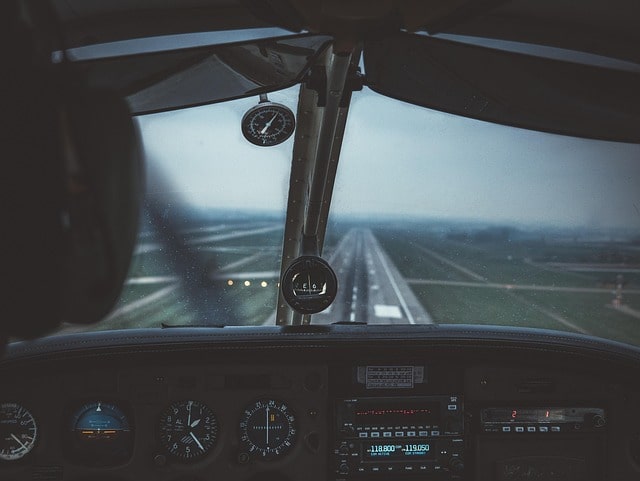The Washington midair collision that killed 67 people remains one of the most catastrophic aviation disasters in U.S. history. But beneath the tragedy lies a deeper story of systemic failure, bureaucratic confusion, and a fragile safety system that crumbled under pressure. This article explores how a web of miscommunication, human error, and regulatory shortcomings created a perfect storm—one that changed American aviation policy forever.
Table of Contents
The Incident: Two Planes, One Tragic Moment
On December 1, 1982, a Pacific Southwest Airlines (PSA) commuter jet carrying 67 people collided midair with a U.S. Air Force F-4 Phantom II jet near Washington, D.C., not far from Reagan National Airport. Both aircraft disintegrated in the sky, raining fiery debris over the suburban neighborhood of Potomac Park, just miles from the nation’s capital.
The PSA flight, en route to Washington from Knoxville, was descending for landing when the F-4, returning from a training exercise, entered the same airspace. With no last-minute evasive action and no distress call, the two aircraft collided at roughly 10,000 feet. All 67 people aboard the PSA jet were killed instantly. The two military pilots ejected, one survived.
Washington midair collision: A System Cracked at the Seams
This wasn’t simply a tragic accident—it was the result of systemic breakdown. At the time, Reagan National Airport’s air traffic control system was under-resourced, and its controllers were overworked due to post-strike staffing shortages following the 1981 PATCO strike.
Moreover, the military jet was operating under a different set of protocols, causing friction between civilian and military aviation rules. According to FAA records, the F-4 was not adequately tracked and had no clear separation guidance from the PSA flight.
Air traffic controllers, drowning in a backlog of radar data and poor communication tools, never alerted either aircraft in time. It wasn’t a matter of a single mistake—it was a sequence of oversights, delayed decisions, and incompatible procedures.
Government and Expert Reactions

The National Transportation Safety Board (NTSB) swiftly launched an investigation, concluding that the cause was a “breakdown in separation assurance.” Former NTSB chairman Jim Burnett stated:
“This collision exposed a deep flaw in how civilian and military aircraft share controlled airspace. The system did not protect the public.”
Politicians demanded accountability. Senator John Glenn, a former astronaut and aviation expert, warned:
“We’re flying in the blind if we don’t address the root problem: fragmented airspace control.”
Consequences: Reforms That Followed
The Washington midair collision triggered a nationwide aviation safety overhaul. Key reforms included:
- Reintegration of military and civilian radar systems
- Implementation of Terminal Radar Approach Control (TRACON) systems
- Introduction of mandatory transponders for all aircraft in controlled airspace
- Enhanced controller training and fatigue regulations
The FAA also introduced stricter coordination guidelines between civil and military controllers, and radar coverage around D.C. was significantly expanded.
These reforms eventually led to the creation of the NextGen Air Transportation System, the modern framework used today to avoid such collisions.
Why This Still Matters
The Washington midair collision wasn’t just a historic tragedy—it remains a cautionary tale. In an age of increasing drone traffic, private jet congestion, and defense exercises near urban areas, the risk of another similar incident is real.
Aviation experts warn that unless technology keeps pace with traffic complexity, the safety net could tear again.
“Safety in aviation isn’t guaranteed by good luck—it’s maintained by constant vigilance and systemic integrity,” noted FAA whistleblower Karen Fosberg.
Conclusion
The Washington midair collision was not just a one-time tragedy—it was a warning. A wake-up call that forced a fragmented aviation system to evolve. It serves as a reminder that safety must never be assumed, and that even the most routine skies can turn deadly without precision, coordination, and accountability.
(FAQs): Washington midair collision
What caused the Washington midair collision?
The collision occurred due to a combination of poor airspace coordination between civilian and military authorities, radar blind spots, and controller fatigue.
How many people died in the Washington midair collision?
All 67 passengers and crew aboard the PSA flight died. One of the two military pilots survived.
Did this incident lead to any changes in aviation safety?
Yes, it led to widespread FAA reforms, integration of radar systems, and improved coordination between military and civilian flight operations.
Is air traffic over Washington safer now?
Yes. Radar coverage has been modernized, airspace management protocols have improved, and TRACON systems are in place.
Visit www.documentarytimes.com for more in-depth investigations and historical case studies.